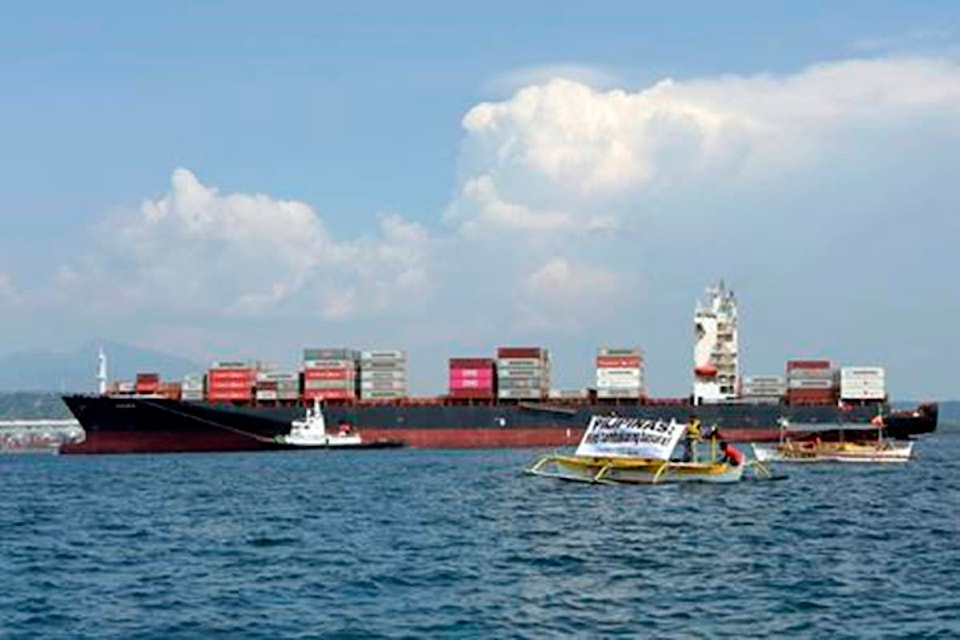The prospect of air pollution one day wafting through the Fraser Valley from international garbage being incinerated is very disturbing, said Jason Lum, chair of the Fraser Valley Regional District.
“From what we understand, Metro Vancouver is going to be burning the material from the Philippines at their Burnaby facility,” Lum said. “We have a major concern about the timing of this given that we are just about to head into a potentially devastating wildfire season.”
An estimated 1,500 tonnes of waste is being shipped back to Canada to be burned.
Metro Vancouver announced last month it plans to safely incinerate the contents of 69 shipping containers of repatriated recycling and other waste, as the upshot of a six-year dispute between Canada and the Philippines.
But questions remain.
Lum said FVRD officials are hoping to receive assurances about what air quality risks residents will face, and he had hoped Metro reps could have found alternatives to incinerating the materials.
“Adding any pollution to an already compromised airshed would be untenable,” Lum said.
The long-held position at the FVRD is that waste should always be sorted with recyclables extracted, not incinerated or landfilled, so Lum said the idea of Metro regularly accepting international waste to feed the incinerator is a real worry.
“My concern is two-fold,” Lum said Wednesday. “Number one is that while Metro Vancouver may have a clear understanding of the components of this garbage, we do not.
“Number two is that we are looking for assurances from Metro, and other governments, that this a one-off for extenuating circumstances and does not signal a change in policy. The acceptance of international waste to feed their incinerator is a real worry.”
Metro Vancouver officials said in a news release in May that they are still confident that they can “safely and efficiently” deal with the waste at their Waste-to-Energy Facility (WTEF).
Audits done by CFIA show the waste is about 95 per cent recyclables like paper and plastic, with “low levels of contaminants” found. It was initially shipped from the Port of Vancouver to the Philippines in 2013 and 2014.
“Strict handling and disposal criteria must be followed whenever there is a risk of biological or agricultural contamination,” said Jack Froese, chair of Metro Vancouver’s Zero Waste Committee.
“Waste-to-Energy is the best option for secure disposal because there is no potential for contact with wildlife, and no potential for waste to leave the facility following disposal.”
The returning waste will take about two days to process at the WTEF.
“With one of the highest recycling and waste reduction rates in North America and a sustainable system for managing residual garbage, Metro Vancouver is uniquely capable of safely disposing of this material in an environmentally responsible manner,” added Froese.
Chris Allan, director of solid waste operations for Metro Vancouver, the material coming back from the Philippines is expected to be “completely safe,” after it’s processed if the initial audits are correct, and they believe the waste is “representative” of other Canadian recycling waste, with only trace contamination.
As it stands, Metro’s WTEF in Burnaby operates seven days a week, and 24 hours a day. A good chunk of the plant is dedicated to air pollution control, with continuous emissions monitoring, he noted.
“That’s where we minimize the elements going up the stacks,” said Allan.
Plant operators reduce the potential for air pollution in a number of ways, from lime and carbon injection, to ammonia injection, they treat the gases produced by incineration. Also a fabric membrane filters out any airborne materials, like fly ash, that emanate from the flue stack.
Metro Vancouver has been working with Environment and Climate Change Canada on the logistics of receiving waste, with the aim of disposing of it before the end of the summer. They also plan to conduct further audits on the contents as a precaution before processing.
The FVRD has not formally met with Metro Vancouver officials to discuss this matter yet.
“I hope the results of any waste audit will be shared with FVRD prior to starting the incineration of this waste,” Lum added.
READ MORE:
READ MORE:
jfeinberg@theprogress.com
Like us on and follow us on .




